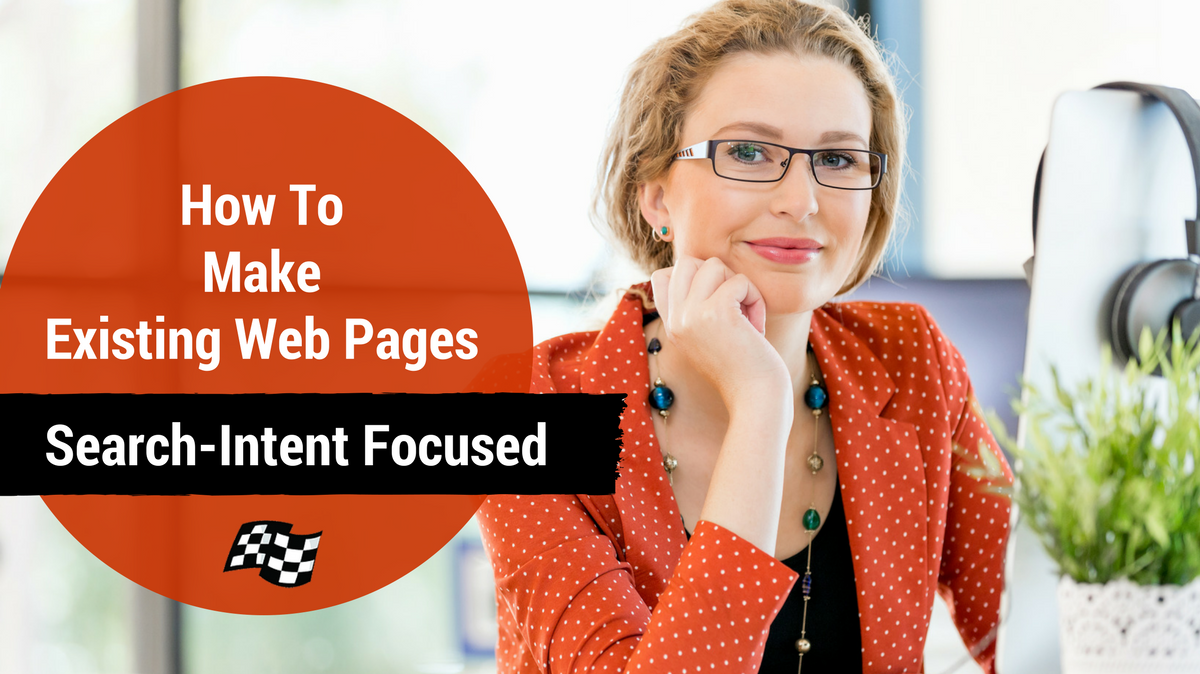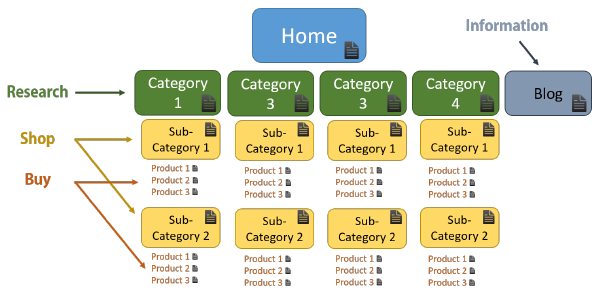
Part of the job of every SEO is the process of merging keywords into content. That can be done using existing content or creating new content for the main site or the blog. But when it comes to URLs with more staying power, there is no question that optimizing existing pages gives you more bang for your buck.
Not only do existing pages tend to be more evergreen, they also start with more authority than new pages. New pages and/or blog posts are more prone to being knocked out of search results by similar but more recent content.
Yet, there is more to successful optimization than just finding “relevant” pages with the most authority. You have to optimize pages that match the intent of the keywords being searched.
What’s the intent of this page?
That’s the question that must be asked before any optimization of a page can begin. And to answer that, you start with a list of all your site URLs.
Find a tool that will spider your site as a search engine does. The goal is to collect a complete list of the URLs that you have already determined are valuable to your visitors. If they are not valuable, then they shouldn’t be on your site!
Next, go through the list and review each URL to determine where it falls in the purchase cycle:
- Research – The visitor is in the early stages, learning more about what they want and need.
- Shop – The visitor has a good idea what they want, and now they are fine-tuning their requirements.
- Buy – The visitor knows almost exactly what they want to buy, and they need to know who has the best option.
- Information – The visitor does not have intent to buy, but rather to learn.
Matching Pages to Intent
You don’t have to be clairvoyant to determine the searcher’s intent. Typically, searchers in each of those phases of the purchase cycle need a specific type of page.

This illustration provides a rough guide to demonstrate what kinds of pages fit into each of the main intent categories.
Category Pages
These pages share broad information, such as the types of products that are available. Visitors need this information when they are beginning to research a future purchase.
You want to optimize these types of pages for broader keywords, such as “TVs.”
Sub-Category Pages
These pages include information that appeals to those in the “Shop” phase who have a general idea of what they want but aren’t sure which specific product to buy.
For instance, if the visitor was shopping for a TV (the category) and knew she wanted a smart TV, then “smart TV” would be a sub-category.
Product Pages
Shoppers in the “Buy” stage know exactly what product they want and are determining where to buy it. These visitors tend to type the product name directly into search. You want to bring them to a page that specifically talks about that product alone and gives them the information they need to decide that your company is the best place to buy the product.
In the example of the TV, you want to make sure your product pages are optimized for the specific product name, such as “Vizio 55-inch smart tv.”
Blog
This page features articles that provide information for non-buying visitors seeking to educate themselves. These visitors in the “Information” stage might search for something like “types of TVs.” You could optimize a blog post describing the options available today.
Get It Right From the Start
At this stage, it’s important to take your time to ensure that you assign the right intent to each page. If you identify the intent incorrectly, you’ll optimize the page incorrectly as well.
Once you know the intent of the page, then you can move onto the next stage of optimizing the content for keywords that specifically match that intent.
